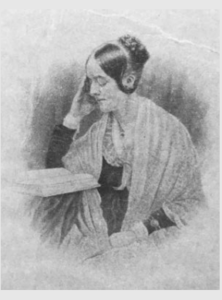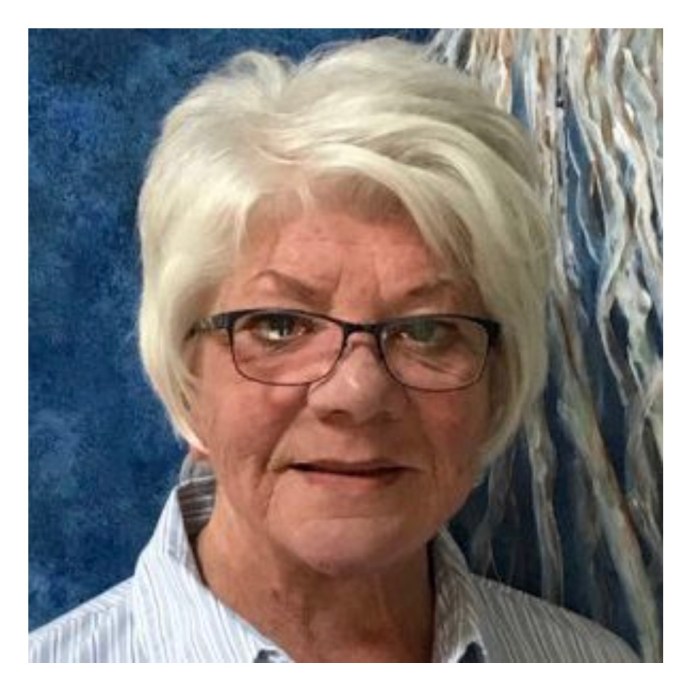By Elizabeth (Zabby) Jiler Margaret Fuller lives! Well, almost. The first identifiable American feminist may have drowned off the coast of Fire Island in 1850, but several Point O’Woods (POW) groups and a Pulitzer Prize-winning author teamed up to keep Fuller’s spirit alive on a recent Saturday. They made a convincing case that 21st Century Americans owe a debt to Fuller for advancing radical notions like gender equality and mental health.A good-sized gathering at Point O’Woods Casino could imagine the rigorous and insightful Fuller thanks to Megan Marshall, who received a 2014 Pulitzer for “Margaret Fuller: A New American Life.” When Marshall, a prominent biographer, said she was honored to give the 6th Annual Robert F. Sayre Memorial Lecture, she acknowledged both Sayre’s stature and POW’s remarkable effort to bring off Margaret Fuller Day on June 10.Marshall acknowledged that Sayre’s acclaimed “American Lives” featured Fuller and other women in its collection of historical autobiographical pieces. Sayre, a president of the historical society, had conceived of annual lectures to bring together Fire Islanders to consider issues affecting the island as a whole. Chris Soller, Fire Island National Seashore superintendent; Suzy Goldhirsch, president of Fire Island Association; and Sayre himself combined to present the first two lectures before his death in 2014.As this year’s visitors from Fire Island and around the country arrived for Marshall’s remarks, they signed a guestbook just as attendees had for a similar Margaret Fuller memorial event there in 1901. On that date, leading women of Point O’ Woods dedicated a memorial pavilion in Fuller’s memory, acknowledging the loss of her and her family when the “Elizabeth” wrecked off Fire Island some 50 years before.Katherine Hanaway of Point O’Woods Historical Society explained Fuller appeared the ideal subject for this year’s lecture. The society had designated 2017 the Year of the Woman because 100 years ago New York State allowed women to vote. Although Fuller was just 40 when she and her family drowned, her career of editing and writing was among the more impressive in the nation, compounded by the fact that she was virtually the first American woman to take on the kind of challenges that she did.Fuller inspired the “first wave” of feminism, writing about women’s equality and sponsoring discussion groups for females to consider issues of the day. In addition, she had edited a publication of American intellectuals at the behest of her mentor Ralph Waldo Emerson. When that proved economically unsustainable, Fuller accepted an offer from Horace Greeley, editor of New York’s increasingly prominent paper, New York Tribune.As a book critic and eventually a front page columnist for the Tribune, biographer Marshall related Fuller gradually introduced readers to 19th Century urban ills: how women’s severely restricted employment options fueled widespread prostitution and how mental illness meant virtual abandonment. But it was Fuller’s 1845 book “Woman in the Nineteenth Century” that got the most attention. It seems path breaking even by contemporary standards, as Marshall illustrated. Anticipating present day conversations, Fuller advocated everyone being able to pursue individual “fullness of being,” and claimed that gender was a more fluid designation than biology suggested.The feminists of the 1848 Seneca Falls Women’s Rights Convention would say that Fuller’s work inspired them. In turn, as Point O’Woods was being established as a community in 1898, its prominent women suffragettes campaigned first for a Fuller library, and more successfully for a Margaret Fuller Memorial Pavilion. While the pavilion illustrated how Fuller inspired their continued campaign for the vote, it washed out to sea in 1913, years before New York allowed women’s suffrage.For its commemorative Margaret Fuller Day the Point O’Woods Historical Society, Community Fund and Chautauqua Society co-hosted four events in three locations: an exhibit opening of art and photographs, a discussion of the “Elizabeth” shipwreck, a reception and the centerpiece Sayre lecture. Current Historical Society President Andy Platt said there would be another Sayre lecture in 2018, celebrating the continuing attachment to Fire Island of a native Ohioan and University of Iowa professor.For the rest of this summer, the related exhibition including images of the Fuller Pavilion and details of Point O’Woods’ early women leaders will remain on display in the Point O’Woods Post Office.This article originally ran in Volume 61, Issue 3 of the print edition on June 23, 2017. It was featured on page 13 with the title “Point O’ Woods Historical Society: Margaret Fuller Lives!”
Margaret Fuller lives! Well, almost. The first identifiable American feminist may have drowned off the coast of Fire Island in 1850, but several Point O’Woods (POW) groups and a Pulitzer Prize-winning author teamed up to keep Fuller’s spirit alive on a recent Saturday. They made a convincing case that 21st Century Americans owe a debt to Fuller for advancing radical notions like gender equality and mental health.A good-sized gathering at Point O’Woods Casino could imagine the rigorous and insightful Fuller thanks to Megan Marshall, who received a 2014 Pulitzer for “Margaret Fuller: A New American Life.” When Marshall, a prominent biographer, said she was honored to give the 6th Annual Robert F. Sayre Memorial Lecture, she acknowledged both Sayre’s stature and POW’s remarkable effort to bring off Margaret Fuller Day on June 10.Marshall acknowledged that Sayre’s acclaimed “American Lives” featured Fuller and other women in its collection of historical autobiographical pieces. Sayre, a president of the historical society, had conceived of annual lectures to bring together Fire Islanders to consider issues affecting the island as a whole. Chris Soller, Fire Island National Seashore superintendent; Suzy Goldhirsch, president of Fire Island Association; and Sayre himself combined to present the first two lectures before his death in 2014.As this year’s visitors from Fire Island and around the country arrived for Marshall’s remarks, they signed a guestbook just as attendees had for a similar Margaret Fuller memorial event there in 1901. On that date, leading women of Point O’ Woods dedicated a memorial pavilion in Fuller’s memory, acknowledging the loss of her and her family when the “Elizabeth” wrecked off Fire Island some 50 years before.Katherine Hanaway of Point O’Woods Historical Society explained Fuller appeared the ideal subject for this year’s lecture. The society had designated 2017 the Year of the Woman because 100 years ago New York State allowed women to vote. Although Fuller was just 40 when she and her family drowned, her career of editing and writing was among the more impressive in the nation, compounded by the fact that she was virtually the first American woman to take on the kind of challenges that she did.Fuller inspired the “first wave” of feminism, writing about women’s equality and sponsoring discussion groups for females to consider issues of the day. In addition, she had edited a publication of American intellectuals at the behest of her mentor Ralph Waldo Emerson. When that proved economically unsustainable, Fuller accepted an offer from Horace Greeley, editor of New York’s increasingly prominent paper, New York Tribune.As a book critic and eventually a front page columnist for the Tribune, biographer Marshall related Fuller gradually introduced readers to 19th Century urban ills: how women’s severely restricted employment options fueled widespread prostitution and how mental illness meant virtual abandonment. But it was Fuller’s 1845 book “Woman in the Nineteenth Century” that got the most attention. It seems path breaking even by contemporary standards, as Marshall illustrated. Anticipating present day conversations, Fuller advocated everyone being able to pursue individual “fullness of being,” and claimed that gender was a more fluid designation than biology suggested.The feminists of the 1848 Seneca Falls Women’s Rights Convention would say that Fuller’s work inspired them. In turn, as Point O’Woods was being established as a community in 1898, its prominent women suffragettes campaigned first for a Fuller library, and more successfully for a Margaret Fuller Memorial Pavilion. While the pavilion illustrated how Fuller inspired their continued campaign for the vote, it washed out to sea in 1913, years before New York allowed women’s suffrage.For its commemorative Margaret Fuller Day the Point O’Woods Historical Society, Community Fund and Chautauqua Society co-hosted four events in three locations: an exhibit opening of art and photographs, a discussion of the “Elizabeth” shipwreck, a reception and the centerpiece Sayre lecture. Current Historical Society President Andy Platt said there would be another Sayre lecture in 2018, celebrating the continuing attachment to Fire Island of a native Ohioan and University of Iowa professor.For the rest of this summer, the related exhibition including images of the Fuller Pavilion and details of Point O’Woods’ early women leaders will remain on display in the Point O’Woods Post Office.This article originally ran in Volume 61, Issue 3 of the print edition on June 23, 2017. It was featured on page 13 with the title “Point O’ Woods Historical Society: Margaret Fuller Lives!”




























